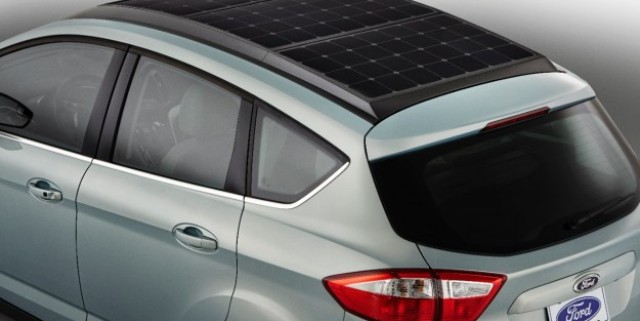
The Ford C-Max Solar Energi concept debuts solar power technology that allows it to harness energy from the sun to charge its battery and drive its electric motor, significantly reducing its environmental impact.
The C-Max Solar Energi concept is Ford’s response to its goal of developing a car that delivers the benefits of a plug-in hybrid – namely, low vehicle emissions and low fuel consumption figures – without relying on the electric grid for power.
With solar panels integrated into its roof, the C-Max concept harnesses solar energy by using a Frensel lens to direct the sun’s rays into its panels, acting like a magnifying glass and boosting sunlight by a factor of eight. Ford says the technology will reduce a driver’s greenhouse-gas emission footprint by up to four metric tons each year.
Ford also claims that after being exposed to one day’s worth of sunlight, the concept is capable of delivering similar performance to its C-Max Energi plug-in hybrid EV. This means the car is capable of generating 8kW of power, has an electric range of 34km, a total range of 1000km, and an official fuel consumption figure of 2.4L/100km.
“The Ford C-Max Solar Energi concept shines a new light on electric transportation and renewable energy,” said Ford global director of vehicle electrification Mike Tinskey.
Despite Ford’s goal of taking the car totally off the grid, the concept does retain a charge port, meaning owners could hypothetically connect the car to a charging station, retaining the option of grid power if so desired. However, Ford estimates up to 75 per cent of all daily drives could be made solely with the use of solar power, relegating the car’s plug-in capabilities to a back-up only scenario.
In 2013, Ford sold six electrified models around the world, with sales of its hybrid, plug-in hybrid and all-electric vehicles numbering approximately 85,000 units for the year. The C-Max people-mover, as well as its electrified variants, are not offered in Australia.
The concept will go on display at the 2014 International CES in Las Vegas, from January 7-10, before Ford begins real-world testing of the car’s technology.





